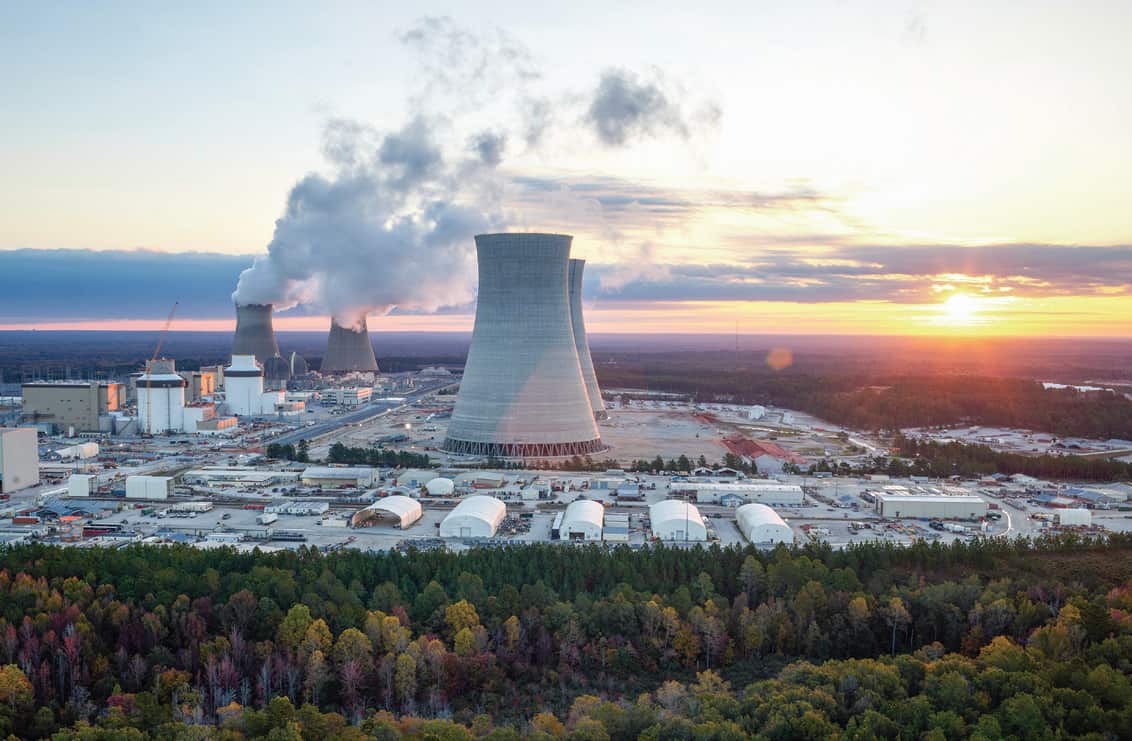
Coastal Electric Cooperative serves our members with a diverse portfolio of safe, reliable, cost-effective and environmentally responsible power, and nuclear energy has become increasingly important in the transition to a cleaner energy future. Through our wholesale energy supplier, Oglethorpe Power, we receive emission-free nuclear energy from one of the largest clean energy projects in the nation, Plant Vogtle Units 3 and 4.
These units, located in Waynesboro, represent the first advanced commercial nuclear project in the United States in more than three decades. In July 2023, Unit 3 C Nuclear energy is safe, reliable and emission-free reached commercial operation, marking a historic achievement for the energy industry, the state of Georgia and the entire nation. Now in service, the new nuclear unit will provide our members with safe, clean energy for the next 60 to 80 years.
In addition to being a clean energy source, nuclear is also considered one of the most reliable energy sources as nuclear power plants can generate electricity at full power 24 hours a day, seven days a week.
The existing units at Plant Vogtle, Units 1 and 2, have been providing safe, clean energy for Georgians for more than 34 years. Once Unit 4 reaches commercial operation, the final unit at the nuclear site, Plant Vogtle will become the largest producer of emission-free energy in the United States. Our investment in the Vogtle construction project is a testament to the important investments we’re making that drive us toward a cleaner and more sustainable future.
Coastal Electric Cooperative has no plans to raise rates at this time in response to the Vogtle project. Our member-elected board of directors and Coastal Electric Cooperative staff planned ahead for the time that Vogtle Unit 3 would come on-line and factored the costs into our financial planning.
How Plant Vogtle Units 3 and 4 work

1. Water is pumped through the reactor core, heated by the fission process, pumped through thousands of tubes in the four steam generators and back to the reactor in a closed loop.
2. Cooler water in the steam generator comes in contact with the hot tubes and turns to steam.
3. Steam goes into the turbine and spins the turbine blades.
4. The turbine spins the electric generator to produce electricity.
5. Steam goes to the condenser, where it turns to liquid again to continue the cycle.
6. Water that circulates through the condenser is cooled by large cooling towers.

ONE 1/2" uranium fuel pellet provides as much energy as:
- 1 TON of coal
- 149 GALLONS of oil
- 17,000 CUBIC FEET of natural gas
10 uranium fuel pellets:
Can power a typical household’s electricity needs for a year.
18 MILLION uranium fuel pellets:
Power each nuclear reaction in Units 3 and 4.
